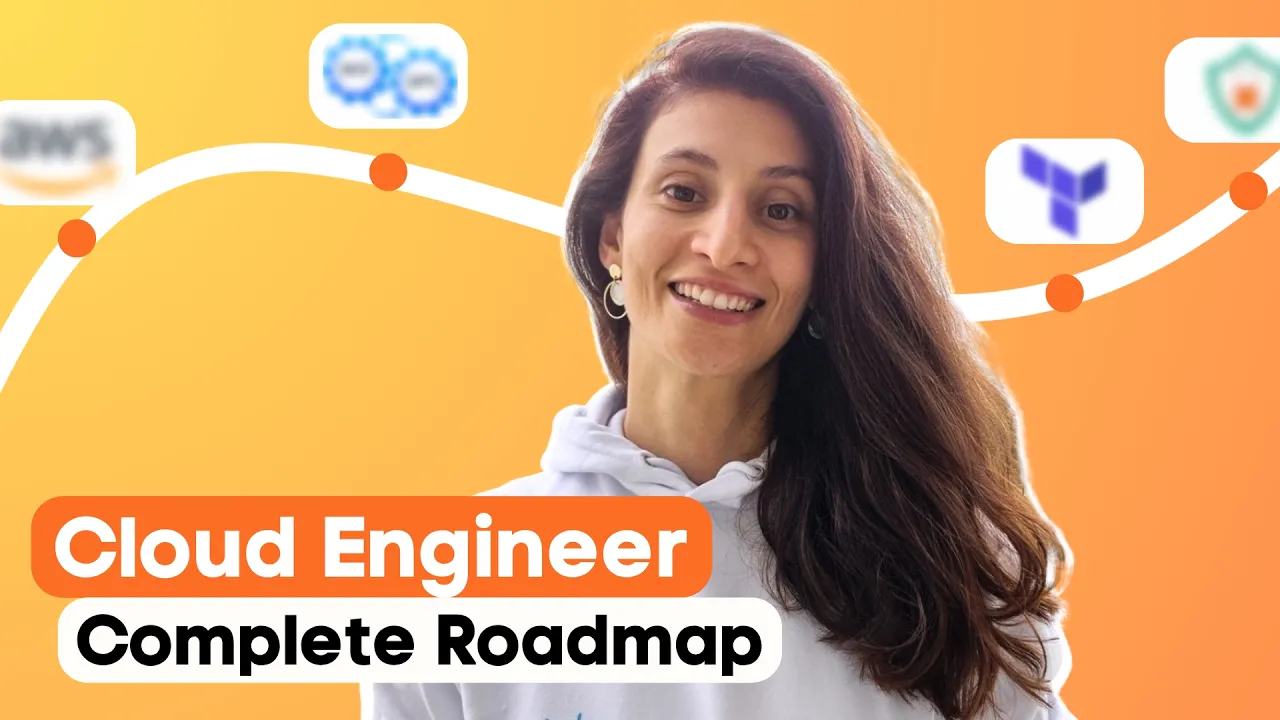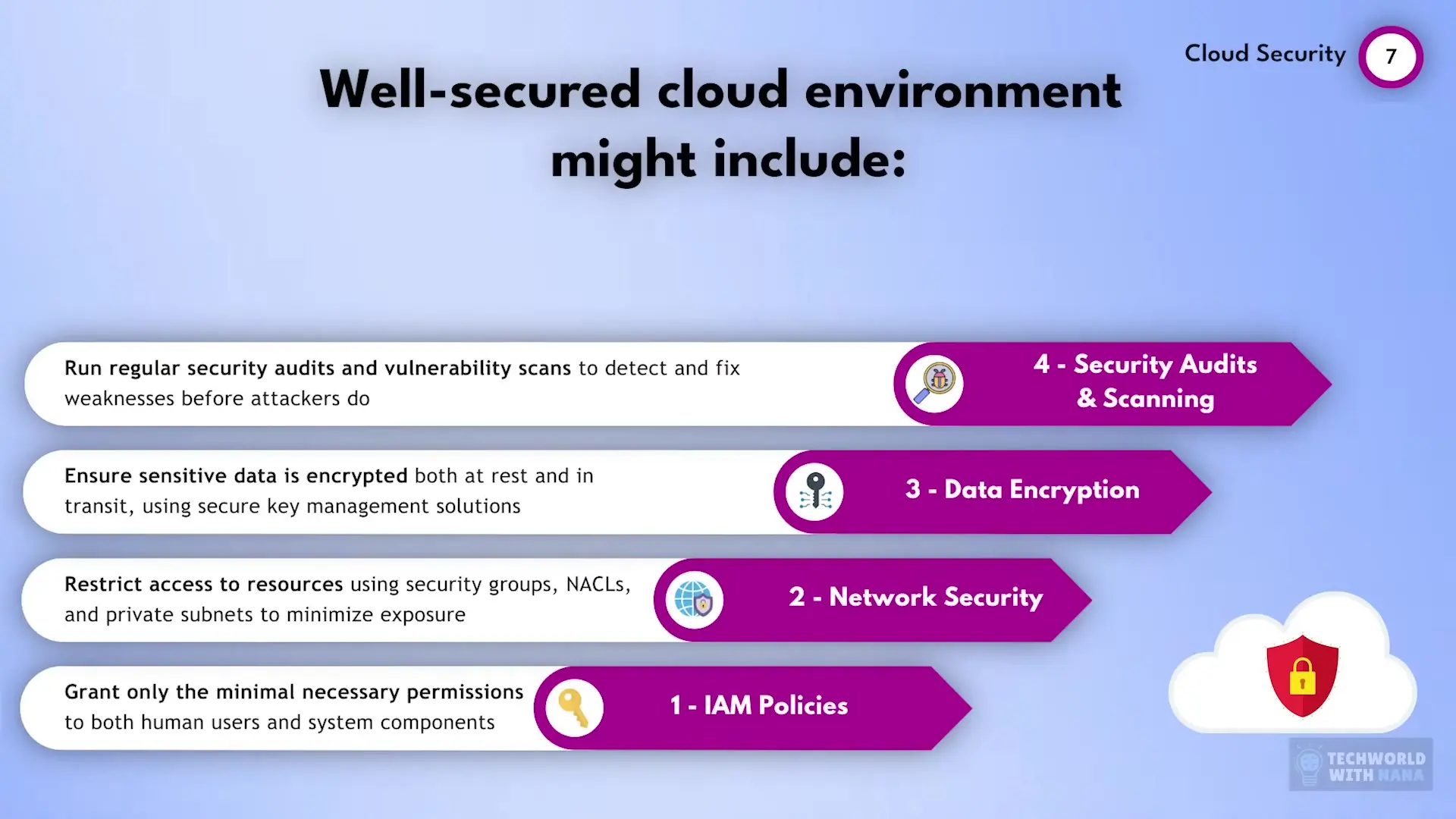
The transition from traditional on-premises infrastructure to cloud computing has revolutionized how businesses deploy and scale applications. This comprehensive roadmap will guide you through the essential skills and knowledge required to become a successful cloud engineer - one of the most in-demand and well-compensated roles in the tech industry today.

The Contrast: Traditional vs. Cloud Infrastructure
Imagine working at a company that still manages all infrastructure on-premises. When a new application needs deployment, it takes weeks to order hardware, configure networking, set up servers, and finally deploy the application. During unexpected traffic spikes, applications crash because resources can't scale quickly enough.
In contrast, cloud-native companies provision infrastructure in minutes, automatically scale based on demand, and allow developers to focus on building features rather than waiting for infrastructure. This agility represents the fundamental power of cloud computing and explains why cloud engineering skills are in such high demand.
Building a Solid Foundation: Essential IT Skills
Before diving into specific cloud platforms like AWS or Azure, it's crucial to establish a strong foundation in core IT concepts. While it's technically possible to jump straight into cloud services without prior experience, you'd be building a house without a proper foundation.

Consider a scenario where you've deployed a web application to the cloud, and suddenly it becomes inaccessible. Without understanding networking concepts like IP addresses, DNS, load balancing, and firewalls, troubleshooting becomes significantly more challenging.
Key Foundational Skills for Cloud Engineers
- Operating Systems (particularly Linux): Most cloud workloads run on Linux, so familiarity with command-line operations, file permissions, and basic shell scripting is essential.
- Networking Fundamentals: Understanding DNS, IP addressing, routing, subnets, and firewalls will help you configure and troubleshoot cloud networking issues.
- Basic Programming/Scripting: While you don't need to be a software developer, knowledge of languages like Python will enable you to automate cloud infrastructure tasks.
- Database Concepts: Familiarity with both SQL and NoSQL database systems, as data storage is a critical component of cloud applications.
Understanding Core Cloud Concepts
Once you've built a foundation in IT fundamentals, it's time to understand key cloud computing concepts. Imagine being in a meeting where your team is deciding whether to migrate an application to the cloud, and someone asks whether to use IaaS, PaaS, or SaaS for the workload. Without understanding these service models and their trade-offs, you can't contribute meaningfully to the discussion.
Essential Cloud Concepts to Master
- Cloud Service Models: Infrastructure as a Service (IaaS), Platform as a Service (PaaS), and Software as a Service (SaaS)
- Deployment Models: Public cloud, private cloud, hybrid cloud, and multi-cloud strategies
- Core Benefits of Cloud Computing: Scalability, elasticity, pay-as-you-go pricing, and global reach
- Shared Responsibility Model: Understanding where cloud provider responsibility ends and yours begins
- Cloud Economics: Cost optimization strategies and understanding the financial aspects of cloud usage
Choosing a Cloud Provider and Essential Services
After understanding cloud concepts, the next step is choosing a cloud provider to learn. AWS, Azure, and Google Cloud are the major players, with AWS currently holding the largest market share, making it often a good starting point for beginners.
When you first log into a cloud console like AWS, the sheer number of services can be overwhelming. It's important to understand that you don't need to learn every single service—many won't be relevant to your work. Focus on mastering the core services first.
Essential Cloud Services to Learn First
- Compute Services (e.g., AWS EC2): Learn to provision virtual machines with different operating systems, connect to them via SSH, and understand instance types and pricing models.
- Storage Services (e.g., AWS S3): Understand object storage concepts, creating buckets/containers, uploading files, and setting permissions.
- Networking Services (e.g., AWS VPC): Learn about virtual private clouds, subnets, route tables, internet gateways, and security groups—this is where your networking fundamentals knowledge becomes crucial.
A real-world example demonstrates the importance of understanding cloud networking: A team experienced slow application performance that was traced to their database being in a different region than their web servers, causing high latency. Without understanding cloud networking concepts, this issue would have been much harder to diagnose and fix.
Infrastructure as Code (IaC): The Foundation of Cloud Automation
As you become comfortable manually creating resources in the cloud, you'll quickly realize this approach doesn't scale. Imagine clicking through a cloud console to create hundreds of resources for a production environment—it's time-consuming and error-prone.
Infrastructure as Code (IaC) solves this problem by allowing you to define infrastructure in code and letting specialized tools provision it automatically. Instead of manual configuration, you define your entire infrastructure in configuration files that can be version-controlled, tested, and automated.
Key IaC Tools for Cloud Engineers
- Terraform: A cross-platform IaC tool that works with all major cloud providers. Learn its basic syntax, resource creation, variables, modules, and state management.
- Pulumi: An alternative to Terraform that allows using programming languages like Python or JavaScript instead of a domain-specific language.
- Ansible: While Terraform excels at provisioning infrastructure, Ansible helps with configuration management—installing software packages and configuring settings on existing servers.
For example, instead of manually creating a VPC, subnets, EC2 instances, and an RDS database through the AWS UI, you can define all these in a Terraform configuration file and create the entire environment with a single command. When you need to make changes, you simply modify the code and apply it again.
A practical use case from real projects is deploying the same application across multiple environments (development, staging, production). Using Terraform and Ansible ensures each environment is nearly identical in configuration, increasing confidence that an application tested in development will work the same way in production.
Containerization and Orchestration: The Next Level
As you progress in your cloud engineering journey, you'll encounter containerization—a technology that has revolutionized how applications are packaged and deployed. Containers solve the classic "it works on my machine" problem by packaging the application and its dependencies together.
Consider a scenario where developers build an application that works perfectly on their laptops but fails in the cloud due to dependency issues, missing environment variables, or incompatible software versions. Docker solves this by packaging the entire OS configuration, dependencies, and application code into a portable artifact that runs consistently across environments.
Essential Container Technologies
- Docker: Learn container basics, how containers differ from virtual machines, Docker images, and basic commands for building and running containers.
- Kubernetes: For production workloads with many containers, Kubernetes provides orchestration capabilities—automating deployment, scaling, and management of containerized applications.
- Cloud Container Services: Understand managed container services like AWS ECS, EKS, Azure AKS, or Google GKE that simplify container deployment in cloud environments.

Cloud Security: A Critical Skill
Security is a fundamental aspect of cloud engineering that spans all previous areas. As you build your cloud skills, incorporate security best practices at each stage:
- Identity and Access Management: Learn to implement the principle of least privilege using services like AWS IAM or Azure AD.
- Network Security: Understand security groups, NACLs, and VPC design for isolation and protection.
- Data Protection: Implement encryption at rest and in transit for sensitive data.
- Security Automation: Learn to perform automated security audits, vulnerability scanning, and compliance checks.
- Incident Response: Develop skills to detect, respond to, and recover from security incidents in cloud environments.
Continuous Learning and Certification Path
Cloud technologies evolve rapidly, making continuous learning essential for cloud engineers. Consider pursuing certifications to validate your skills and enhance your career prospects:
- Begin with foundational certifications like AWS Certified Cloud Practitioner or Azure Fundamentals.
- Progress to associate-level certifications like AWS Solutions Architect Associate or Azure Administrator.
- Advance to professional-level certifications as you gain experience.
- Consider specialty certifications in areas like security, networking, or DevOps based on your interests.
Practical Experience: Building Your Portfolio
While learning cloud concepts and technologies is essential, practical experience is equally important. Build a portfolio of cloud projects to demonstrate your skills to potential employers:
- Deploy a multi-tier web application using infrastructure as code
- Set up CI/CD pipelines for automated deployment
- Create containerized microservices with Kubernetes orchestration
- Implement a disaster recovery solution for a sample application
- Design and implement a secure cloud architecture following best practices
Conclusion: Your Path to Becoming a Cloud Engineer
The journey to becoming a cloud engineer requires building a strong foundation in IT fundamentals, understanding core cloud concepts, mastering essential services, learning infrastructure as code, and exploring containerization technologies. By following this roadmap and continuously expanding your knowledge, you'll be well-positioned for a rewarding career in one of the fastest-growing and highest-paying tech fields.
Remember that cloud engineering is not just about technical skills—it also requires problem-solving abilities, a security-focused mindset, and continuous learning as technologies evolve. Start with the fundamentals, build practical experience through projects, and consider certifications to validate your skills as you progress in your cloud engineering journey.
Let's Watch!
Complete Cloud Engineer Roadmap: From Beginner to Advanced Skills
Ready to enhance your neural network?
Access our quantum knowledge cores and upgrade your programming abilities.
Initialize Training Sequence